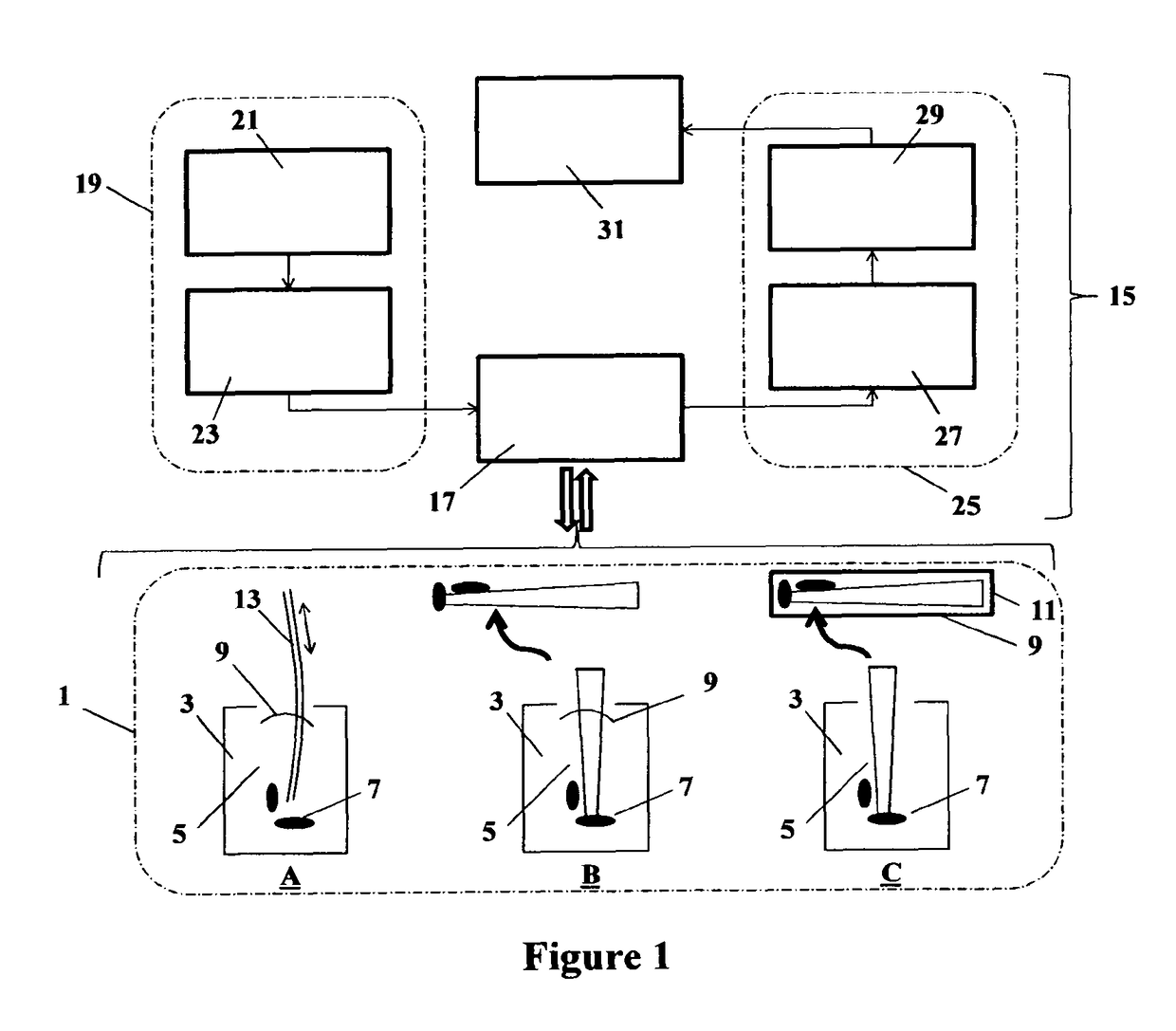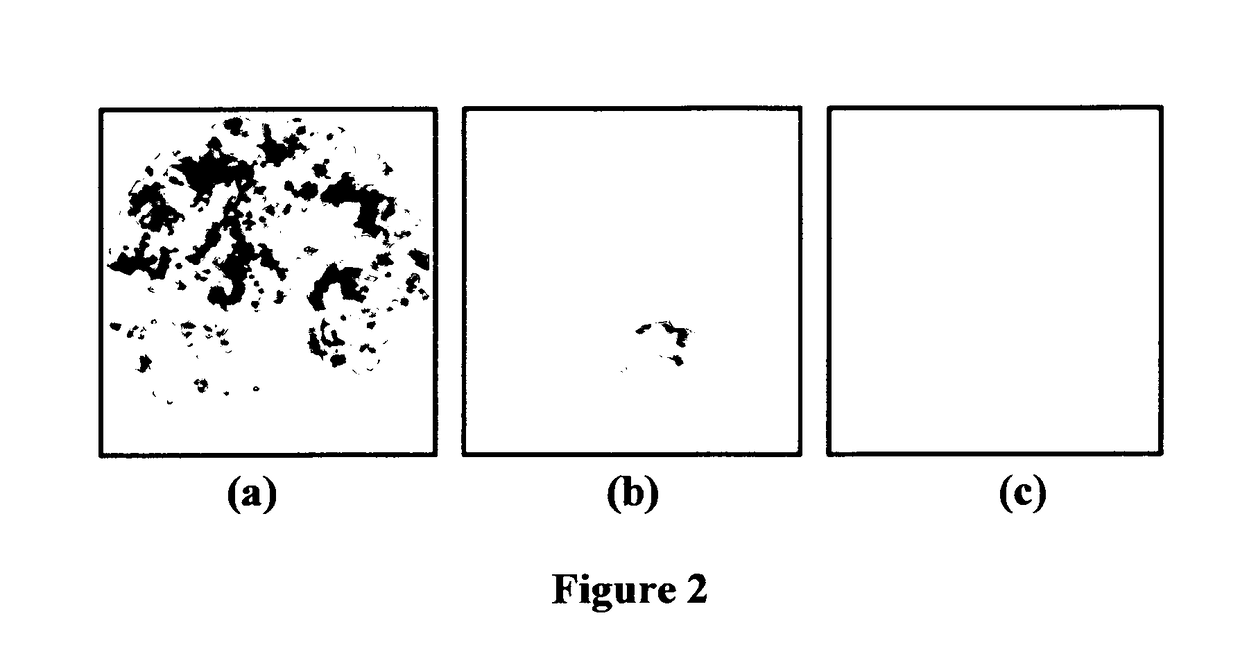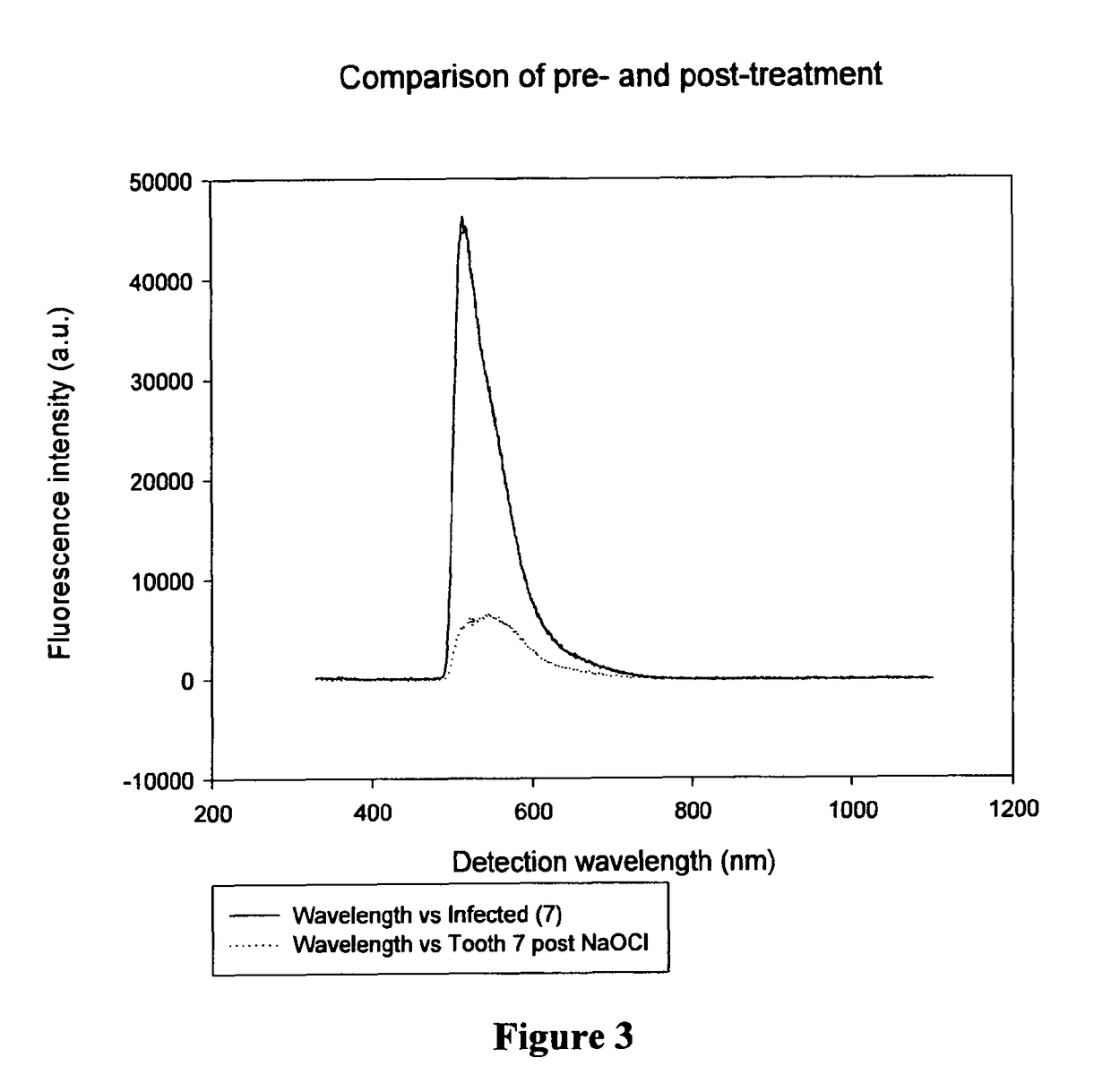Method for detecting the presence of the viable cells in an endodontic sample
a technology for endodontic samples and viable cells, applied in the field of endodontic imaging, can solve the problems of pulpitis process, inability to detect the presence of viable cells in the endodontic sample, so as to minimize the risk of re-infection without the time, cost and potential harm of over-preparation, and the effect of low cost and rapid and readily available means
- Summary
- Abstract
- Description
- Claims
- Application Information
AI Technical Summary
Benefits of technology
Problems solved by technology
Method used
Image
Examples
example
Example 1
Processing of Extracted Teeth
[0117]Twenty freshly extracted, single rooted teeth were obtained under ethical Approval (South East London ethical approval 10 / H0804 / 056). Each tooth had the crown removed to obtain 15 mm long specimens, using a 0.3 mm thickness diamond wafering blade (Extec, Enfield, Conn., USA) on a 11-1180 Isomet low speed saw (Buehler, Düsseldorf, Germany). Root canal patency was confirmed using an ISO 10 K-file. Canals were instrumented with Gates Glidden (nr. 2-4) for coronal flaring followed by ProTaper F3 instrumentation and apical instrumentation with an ISO 45 K-file 1 mm short of the working length. Irrigation throughout the instrumentation was undertaken with sterile saline. Each root was then sectioned longitudinally through the root canal using the low speed saw. The specimen's halves were then reapproximated and placed in a block of freshly mixed impression material (Aquasil™ Hard Putty / Fast Set, Dentsply) contained in 5 ml bijou vials with the c...
PUM
| Property | Measurement | Unit |
|---|---|---|
| volume | aaaaa | aaaaa |
| volume | aaaaa | aaaaa |
| volume | aaaaa | aaaaa |
Abstract
Description
Claims
Application Information
 Login to View More
Login to View More - R&D
- Intellectual Property
- Life Sciences
- Materials
- Tech Scout
- Unparalleled Data Quality
- Higher Quality Content
- 60% Fewer Hallucinations
Browse by: Latest US Patents, China's latest patents, Technical Efficacy Thesaurus, Application Domain, Technology Topic, Popular Technical Reports.
© 2025 PatSnap. All rights reserved.Legal|Privacy policy|Modern Slavery Act Transparency Statement|Sitemap|About US| Contact US: help@patsnap.com



